Discover Top 5 Cities to visit in Rajasthan in December
Rajasthan, often called the Land of Kings, is a state steeped in history, culture, and natural beauty. It’s a region where the past lives in every corner, from its majestic forts to its vibrant festivals. Here’s an overview of the state:
Quick Look:
-
Jaiprur known as Pink City
-
Udaipur: The city of Lakes
-
Jaislamer Know as Golden City
-
Jodhpur City of Lakes
-
Pushakr City of Temples
Highlights of Rajasthan Tourism
Historical Lens
- Rajasthan’s rich history is best understood through its museums and monuments. The Albert Hall Museum in Jaipur is the oldest museum in Rajasthan, showcasing exquisite ivory statues and crystal work.
- The Ahar Museum offers a glimpse of ancient earthen pottery, while the Anokhi Museum of Hand Painting in Amber preserves the traditional art of block printing.
Architectural Lens
- Rajasthan’s grandeur is reflected in its architectural wonders. The Chittorgarh Fort, with its towering gates and historical significance, and Kumbhalgarh Fort, known for the second-largest wall in the world, are must-sees. Amber Fort, a UNESCO World Heritage site, is a stunning example of Rajput architecture, surrounded by the picturesque Aravalli hills.
Religious Lens
- The spiritual side of Rajasthan is equally captivating. Akshardham Temple in Jaipur, dedicated to Lord Narayan, is a beacon of tranquility and beauty. Bagore Sahib Gurudwara marks the journey of Guru Govind Singh Ji, and Abdulla Pir Dargah in Banswara, a Bohra Muslim shrine, is renowned for its serene white marble structure.
Cultural Lens
- Rajasthan’s culture is a kaleidoscope of colors. From the traditional attire of ghagras and kanchlis to the soulful folk music and dances like Ghoomar and Kalbeliya, every element speaks of the state’s rich heritage. Don’t miss the delectable bajre ki roti, a staple of Rajasthani cuisine.
Festive Lens
- Rajasthan is home to some of the most spectacular festivals. The Desert Festival in Jaisalmer features camel races, belly dancing, and turban-tying contests.
- The Pushkar Camel Fair is a grand event with camel races, beauty contests, and puppet shows. Meanwhile, the International Folk Festival in Jodhpur brings together over 200 artists to celebrate diverse art forms.
Nature’s Lens
- The state is a haven for wildlife enthusiasts. Rajasthan is home to the majestic tiger, the rare great Indian bustard, and numerous species in its wildlife reserves. It’s a perfect blend of nature and heritage, with sanctuaries like Ranthambore and Sariska offering a glimpse into the state’s natural wonders.
Interesting Facts About Rajasthan
- Pokhran, located in Jaisalmer district, was the site of India’s first nuclear test in 1974.
- Chotila, Jodhpur, is home to the unique Bullet Baba Temple, where a motorcycle and alcohol are offered to the deity.
- The Karni Mata Temple in Deshnok is famous for its thousands of rats, considered sacred.
- Jantar Mantar in Jaipur is home to the world’s largest stone sundial and is a UNESCO World Heritage site.
- Bhangarh Fort, a 17th-century ruin, is reputed to be one of India’s most haunted forts.
Location and Geography
- Rajasthan lies in the northwestern part of India, occupying a significant portion of the Thar Desert. It shares borders with Punjab, Haryana, Uttar Pradesh, Madhya Pradesh, and Gujarat, and also has a border with Pakistan.
Best Time to Visit Rajasthan
- Rajasthan is best visited between October and March. The weather during these months is more pleasant, with cooler temperatures ideal for exploring the palaces, forts, and desert landscapes. Summer temperatures can soar to 48°C, making the cooler months more enjoyable.
How to Get to Rajasthan
- By Road: Rajasthan has a well-connected network of highways, offering scenic drives. The state also operates a bus service that has been functioning for decades.
- By Rail: With over 4600 km of railway tracks, Rajasthan is well connected to major cities like Mumbai, Delhi, Bangalore, and Kolkata. Trains are a convenient and scenic way to travel within the state.
- By Air: Airports in Jaipur, Udaipur, Jodhpur, and Jaisalmer connect Rajasthan to other parts of India. For international flights, Delhi (260 km from Jaipur) is a major hub.
Top 5 Cities to visit in Rajasthan

1- Jaipur – The Pink City
Jaipur, the capital of Rajasthan, is often referred to as the Pink City, a name that captures both its stunning architectural beauty and the warm hospitality that the city extends to visitors.
Planned meticulously by Vidyadhar Bhattacharya in 1727, Jaipur holds the distinction of being India’s first planned city. The design adhered to the principles of Vastu Shastra, an ancient Indian architectural science, ensuring the city’s layout balanced both aesthetic appeal and practical living needs.
Jaipur’s origins can be traced to the visionary Maharaja Jai Singh II, who, faced with a growing population and limited water resources in Amber, decided to establish a new city.
The vibrant hues of the city, especially the distinct pink color, are linked to a royal gesture. In 1876, when the Prince of Wales visited India, Maharaja Ram Singh ordered the entire city to be painted pink, as the color was associated with hospitality and warmth. This tradition has continued to this day, and Jaipur’s pink buildings offer a striking and memorable sight.
The city is a perfect blend of the ancient and the modern. The majestic forts of Nahargarh, Jaigarh, and the Garh Ganesh Temple rise against the city skyline, providing a rich historical backdrop. Amidst these historic landmarks, Jaipur thrives as a bustling metropolis, offering a harmonious mix of vibrant markets, contemporary architecture, and a thriving cultural scene.
As one of the three corners of the famous Golden Triangle of Delhi, Agra, and Jaipur, the city attracts millions of tourists annually, drawn by its rich heritage, stunning architecture, and the famous Jaipur gems that are globally renowned.
Whether exploring the intricate designs of the City Palace, marveling at the beauty of the Hawa Mahal, or wandering through the bustling Bazaars, Jaipur promises an enchanting journey for every visitor, making it a must-see destination in Rajasthan.
Places to visit in Jaipur:
Amber Fort
- Located about 11 kilometers from Jaipur, Amber Palace is a UNESCO World Heritage Site and a stunning fusion of Hindu and Mughal architectural styles.
- Originally constructed in 1592 by Raja Man Singh I and later completed by Mirza Raja Jai Singh, the palace sits majestically atop the Amber hills. The palace was built as a stronghold for the Kachwaha rulers and offers a breathtaking view of Maota Lake.
Samode
- Located 40 kilometers northwest of Jaipur, Samode is home to the 475-year-old Samode Palace, showcasing Rajput haveli architecture. Visitors can enjoy luxurious stays at Samode Bagh, camel safaris, and traditional rural life.
City Palace
- The City Palace, at the heart of Jaipur, blends Mughal and Rajput architecture. Built by Maharaja Sawai Jai Singh II, the palace complex houses the Mubarak Mahal and the Maharani’s Palace, which feature royal costumes, Rajput weaponry, and ceiling paintings.
Jantar Mantar
- A UNESCO World Heritage Site, Jantar Mantar in Jaipur is the largest of five astronomical observatories built by Maharaja Sawai Jai Singh II. It houses 16 geometric devices used for tracking celestial bodies and measuring time.
Hawa Mahal
- Built in 1799 by Maharaja Sawai Pratap Singh, the Hawa Mahal (Palace of Winds) features five stories of latticed windows (jharokhas) designed for royal women to observe street life while enjoying natural ventilation.
Albert Hall Museum
- Located in Ram Niwas Garden, the Albert Hall Museum is an Indo-Saracenic-style building showcasing arms, weapons, miniature paintings, and stone sculptures.
Nahargarh Fort
- Constructed in 1734, Nahargarh Fort offers stunning views of Jaipur. The Madhavendra Bhawan inside the fort features 12 boudoirs for the queens, all connected by murals. The fort is especially beautiful at night.
Birla Temple
- Built from white marble, the Birla Temple (also known as the Lakshmi-Narayan Temple) was commissioned by the Birla family in 1988. It is dedicated to Lord Vishnu and Goddess Lakshmi, featuring intricate carvings and sculptures.
Jaigarh Fort
- About 15 kilometers from Jaipur, Jaigarh Fort offers panoramic views and is home to the world’s largest cannon, Jaiban. Built in the 18th century, it was designed to protect Jaipur from invaders.
Gaitore (Memorials of Kings)
- Located near Amber, Gaitore is the burial site of Jaipur’s Maharajas, with marble chhatris (cenotaphs) adorned with intricate carvings, the most notable being the chhatri of Maharaja Jai Singh.
Jal Mahal
- The Jal Mahal, or Lake Palace, appears to float on Man Sagar Lake. Its light sandstone exterior contrasts beautifully with the blue of the lake, making it a must-see landmark.
Sisodia Rani Palace and Garden
- Located 8 kilometers from Jaipur, the Sisodia Rani Palace and Garden is an example of Mughal-style landscaping, featuring fountains and water courses amidst murals depicting Radha and Krishna legends.
Vidyadhar Garden
- Near Sisodia Rani Garden, the Vidyadhar Garden is a peaceful retreat with terraced pathways and stunning views, named after the chief architect of Jaipur, Vidyadhar Bhattacharya.
Central Park
- Central Park, the largest green space in Jaipur, houses a polo ground, golf club, and the monumental National Flag, India’s tallest flagpole.
Temples and Memorials:
1. Govind Devji Temple
- Highlights: Unique spire-less architecture, idol of Govind Devji brought by Sawai Jai Singh from Vrindavan.
Historical Significance: Dedicated to Lord Krishna, reflecting royal devotion.
2. Moti Doongri Ganesh Temple
- Highlights: Famous for its Ganesh idol on top of Moti Doongri hill.
Legend: Built after a Ganesh idol cart stopped at the hill.
3. Digamber Jain Mandir
- Located in Sanganer, 14 km from Jaipur.
Architectural Features: Seven-storied spires and idol of Lord Adinath.
Spiritual Importance: A key site for Jain devotees.
4. Galta Ji (Monkey Temple)
- Significance: A pilgrimage and tourist site with temples, natural springs (kunds), and pavilions.
Monkeys: Known as the Monkey Temple.
5. Statue Circle
- Features: A life-size white marble statue of Sawai Jai Singh II.
6. Ram Niwas Garden
- Built in 1868 by Maharaja Sawai Ram Singh, featuring the Albert Hall Museum, a zoo, and art gallery.
7. Kanak Vrindavan
- Located at the foothills of Nahargarh hills, known for picnics, temple visits, and scenic views.
8. Ishwar Lat (Sargasuli)
- Height: 60-feet high minaret, built in 1749 by Raja Ishwari Singh to commemorate a military victory.
9. Amar Jawan Jyoti
- A memorial to soldiers from Rajasthan who sacrificed their lives for the country.
Notable Feature: The eternal torches that burn day and night.
10. Maharani Ki Chhatri (Memorials of Queens)
- A cremation site for royal women of Jaipur near Amber Fort, with marble cenotaphs featuring Rajput architectural style.
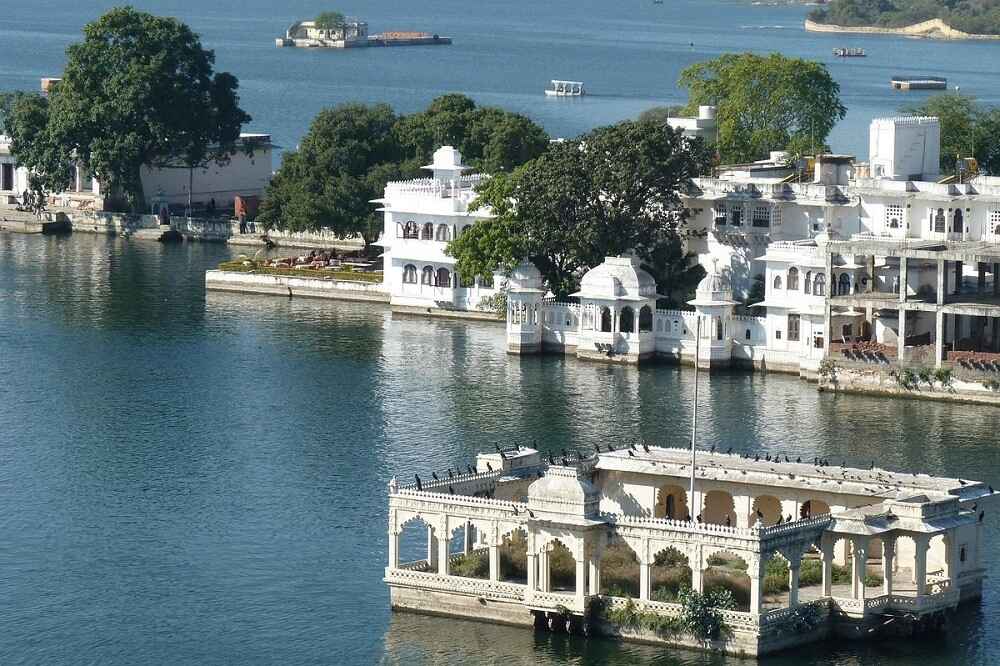
Udaipur: The city of Lakes
Udaipur is a magical city with lots of lakes and palaces. It is sometimes called the “Venice of the East” because it has many beautiful lakes. The Lake Palace sits in the middle of Lake Pichola, looking very pretty! There is also Jaisamand Lake, which is the second biggest man-made lake in Asia. Udaipur is full of amazing palaces like the City Palace and Monsoon Palace. The city has lots of zinc and marble, which make the buildings shine!
There is a solar observatory in Lake Fateh Sagar on an island, and it is the only one in India! People like to visit it to look at the stars. Every year, there is a fun festival called Shilpgram Festival from Dec 21 to Dec 30 where people enjoy art and crafts.
Udaipur was made in 1553 by Maharana Udai Singh II, and he made it the new home for the Mewar Kingdom. It sits in a pretty place called the Girwa Valley, which is near Nagda, the old capital of Mewar.
Places to visit in Udaipur
PRATAP MEMORIAL (MOTI MAGRI)
- At the top of Moti Magri, there is a bronze statue of Maharana Pratap on his favorite horse, Chetak. People climb the hill to honor them. Chetak was a loyal horse who protected Maharana Pratap until its last breath, even in the battle of Haldighati.
CITY PALACE
- The City Palace is a huge palace built on a hill, overlooking the lake. It has courtyards, terraces, and gardens. The Tripolia Gate is where the king was weighed in gold, and the gold was shared with the people.
- You can also see beautiful peacock mosaics at Mor Chowk and blue and white ceramics at the Chini Chitrashala. A light and sound show at Manak Chowk tells the story of Mewar’s history.
LAKE PALACE
- The Lake Palace was built between 1743 and 1746 on an island in Lake Pichola. It was a summer palace and is now a hotel. The palace is made of black and white marble, with gardens, fountains, and pillars.
JAG MANDIR
- Jag Mandir is a palace on an island in Lake Pichola. Built between 1620 and 1652, it was used as a summer palace and party spot by the royal family. Shah Jahan, the emperor who built the Taj Mahal, stayed here when he rebelled against his father.
MONSOON PALACE
- The Monsoon Palace, built on Bansdara hills, was used for watching the monsoon and for hunting. It offers an amazing view of Udaipur and the surrounding areas.
AHAR MUSEUM
- The Ahar Museum is near some cenotaphs of the Maharanas. It has old pottery, sculptures, and a special Buddha statue from the 10th century.
JAGDISH TEMPLE
- Built in 1651, the Jagdish Temple is a beautiful Hindu temple dedicated to Lord Vishnu. It has carved pillars, painted walls, and is one of the most famous temples in Udaipur.
FATEH SAGAR LAKE
- This lovely artificial lake is surrounded by hills. It connects to Lake Pichola and has Nehru Island and the Udaipur Solar Observatory on its islands.
LAKE PICHOLA
- Lake Pichola is one of Udaipur’s most famous lakes. It has Jagniwas and Jagmandir islands. A boat ride at sunset gives a stunning view of the City Palace and the lake.
SAHELIYON KI BARI
- This garden, called the Garden of the Maidens, was built by Maharana Sangram Singh II for the women of the royal family. It has fountains, marble elephants, and a lotus pool.
BIRD PARK GULAB BAGH
- The Bird Park at Gulab Bagh has over 28 species of birds like macaws, parrots, and pelicans. It’s a fun place to see many types of birds.
SUKHADIA CIRCLE
- This area has a marble fountain that is 21 feet tall. The fountain is surrounded by gardens and is a peaceful spot in Udaipur.
BHARATIYA LOK KALA MANDAL
- A museum dedicated to the folk art and culture of Rajasthan and nearby areas. It shows artifacts, clothing, and traditions.
BAGORE KI HAVELI
- This old haveli by Lake Pichola was built in the 18th century. It has many rooms with costumes and modern art.
SHILPGRAM
- Shilpgram is a living museum that shows the tribal lifestyles of the west region. It’s spread over 70 acres and has folk art and crafts.
UDAI SAGAR LAKE
- Udai Sagar Lake was created in 1559 by Maharana Udai Singh to provide water to the kingdom. It is about 13 km east of Udaipur and is 4 km long.
DOODH TALAI LAKE
- Doodh Talai is a small lake near Lake Pichola. It has a garden and is surrounded by small hills with beautiful views.
JAISAMAND LAKE
- Jaisamand Lake is the second largest man-made sweet water lake in Asia. It has an island with birds and is a great picnic spot.
NAVALAKHA MAHAL (GULAB BAGH)
- The Navalakha Mahal is a palace in Gulab Bagh where Maharishi Dayanand stayed in 1882. He wrote his famous book, Satyarth Prakash, here.
VINTAGE CAR COLLECTION
- At the Garden Hotel, you can see a collection of old cars like Cadillac, Chevrolet, and Morris. These cars were used by the Maharanas of Udaipur.
WAX MUSEUM
- The Wax Museum in Udaipur has life-like wax statues of celebrities and features exciting attractions like 9D cinema, gaming zones, and horror shows.
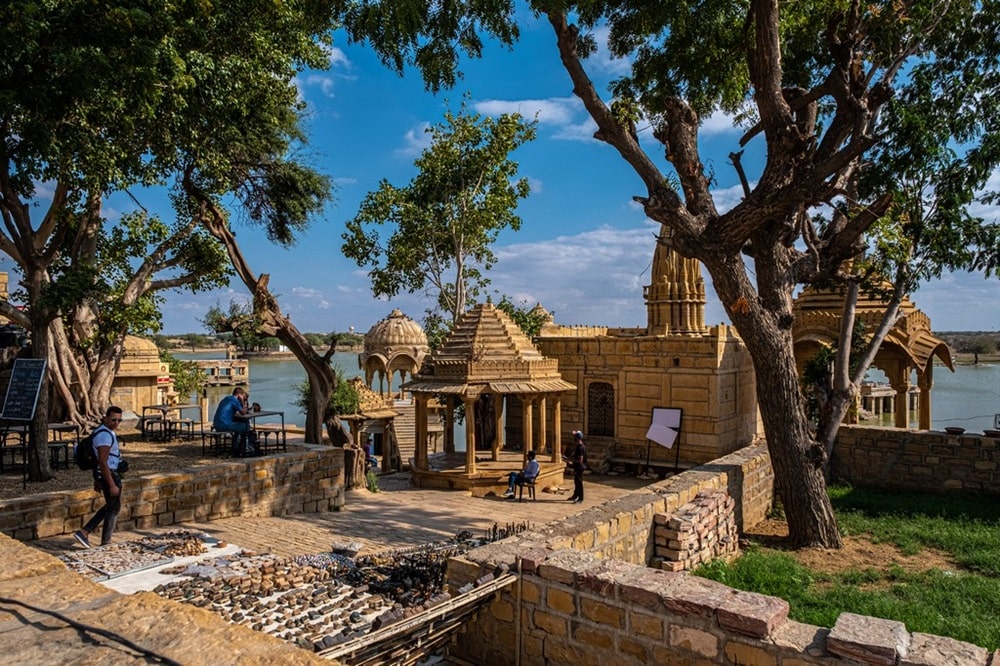
Jaisalmer, also known as the “Golden City,”
Jaisalmer, also known as the “Golden City,” is a mesmerizing blend of history, architecture, and geology, nestled in the Thar Desert of Rajasthan, India.
Its golden sandstone structures, particularly the magnificent Jaisalmer Fort (Sonar Qila), rise dramatically from the desert landscape, earning the city its nickname. Unlike most other forts, Jaisalmer Fort is not merely a tourist site—it is a living fort, with shops, homes, and havelis still occupied by locals, offering a glimpse into the past as it continues to thrive.
The Jaisalmer Fort was built in 1156 by Rawal Jaisal, the founder of the city. It stands as a testament to the grandeur of the Rajput architecture, with its intricate carvings, royal palaces, and temples within the fort complex. This fort, built of yellow sandstone, gives the city its characteristic golden hue, especially at sunset, making it a captivating sight.
Another intriguing feature of Jaisalmer is its proximity to the Thar Desert and its role as a strategic outpost guarding the western frontier of India, near the Pakistan border.
The city’s heritage is intertwined with stories of warriors and traders, as it flourished as a vital trade route between India and Central Asia, particularly during the medieval period.
For those fascinated by geology, Aakal Wood Fossil Park, located about 15 kilometers from Jaisalmer, offers an extraordinary experience.
Visitors can explore fossilized tree trunks, remnants from a prehistoric time when the region was once covered by forests, dating back nearly 180 million years. The park provides insight into the geological changes that have shaped this arid desert landscape over millennia.
Jaisalmer’s havelis, such as the Patwon Ki Haveli and Salim Singh Ki Haveli, showcase the wealth and artistry of the merchant families that once resided here. These havelis are known for their intricate facades, beautiful courtyards, and elaborate carvings that reflect the craftsmanship of the time.
The Sam Sand Dunes, located on the outskirts of Jaisalmer, offer an iconic desert experience, where visitors can enjoy camel rides, cultural performances, and stargazing in the vast expanse of the desert.
Places to visit in Jaisalmer
Light & Sound Show at Gadisar Lake
- The Laser Water Show at Gadisar Lake is one of the first and biggest laser water shows! It uses water screen projection to show the story of Jaisalmer city and its fort.
- It also tells about the brave Rajputs who fought to protect their land. You can see beautiful temples like Tanot Mata Temple, Lodruva Temple, and Longowala war scenes in the show.
Jaisalmer Fort
- Jaisalmer Fort, also called the Golden Fort or Sonar Quila, is golden like the desert sand. The fort looks amazing at sunset! It’s a world heritage site and was shown in a movie by Satyajit Ray called Sonar Kela (The Golden Fortress).
Jaisalmer Government Museum
- This museum shows Rajasthan’s state bird called Godawan (the Great Indian Bustard). There are also old things like rock-cut crockery, jewels, and statues from the 7th and 9th century AD!
Nathmal Ji Ki Haveli
- Nathmal Ji Ki Haveli was made by two brothers. They built it from two sides, and it looks so beautiful and balanced! The haveli has paintings and carved elephants made from yellow sandstone.
Salim Singh Ki Haveli
- This haveli is really old, built in the 18th century. It has arched roofs with peacock-shaped carvings! People say it had extra wooden floors to match the Maharaja’s palace, but the Maharaja took them down!
Patwon Ki Haveli
- Patwon Ki Haveli is one of the biggest and prettiest havelis in Jaisalmer. It has five floors and beautiful carvings on the walls. Some old paintings and mirrors can still be seen inside.
Mandir Palace
- The Badal Mahal (Cloud Palace) is a five-story palace with a Tazia Tower. It has carved balconies and was made by Muslim craftsmen. The tower looks like a Tazia, a special float for Muharram.
Jain Temples of Jaisalmer
- The Jain Temples inside Jaisalmer Fort are from the 12th and 15th centuries. They are made of yellow sandstone and are full of beautiful carvings. The temples are dedicated to Rikhabdevji and Shambhavdevji, two wise teachers.
Bada Bagh
- Bada Bagh is a big garden with royal cenotaphs. It’s 6 km from Jaisalmer and is a great place to see the sunset!
Desert National Park
- The Desert National Park has sand dunes, rocks, and salt lakes. It’s home to animals like the black buck, chinkara, and the Great Indian Bustard. You can also see many migratory birds in winter!
Ramdevra Temple
- The Ramdevra Temple is 12 km from Pokhran. It’s dedicated to Baba Ramdevji, not Lord Ram! Many people come here for the Ramdevra Fair, where they sing devotional songs all night!
Vyas Chhatri
- Vyas Chhatri is a beautiful cemetery in Bada Bagh. It’s full of golden sandstone cenotaphs and is a perfect spot to watch the sunset. You can also hear Rajasthani tunes played on a special instrument called the algoza.
Amar Sagar Lake
- Amar Sagar Lake is a peaceful place near Amar Singh Palace. The lake has stone carvings of animals to protect the royal family. There are also pavilions, steps, and a Jain temple around the lake. It’s another great spot for sunset views!
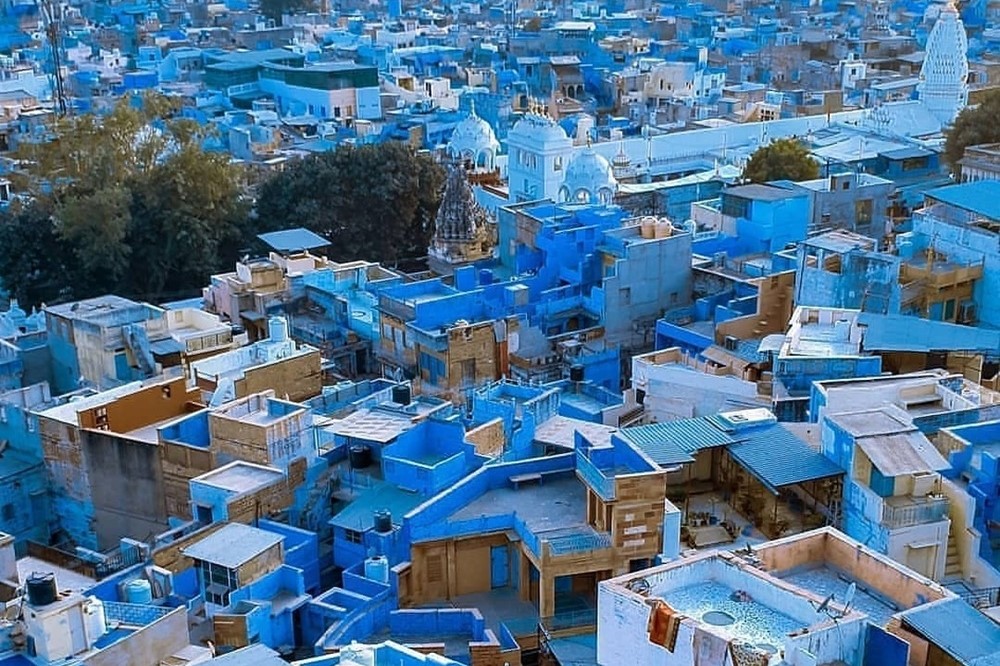
Jodhpur, also called the “Blue City,”
Jodhpur, also called the “Blue City,” is a stunning place in the heart of Rajasthan. It’s surrounded by the vast desert landscapes and is full of history and royal charm. When you visit, you get to see a glimpse of India’s glorious past, with its magnificent architecture and royal heritage.
As you wander through the narrow streets of the old town, you’ll step into a world that still keeps its rich culture and historical stories alive. The city feels like a journey through time, where every corner whispers tales of royalty and splendor.
Make sure to check out the top places to visit in Jodhpur to explore its majestic forts, palaces, and temples. Jodhpur is a beautiful mix of art, architecture, and a refined heritage that takes you back to India’s royal era. It’s like stepping into a land full of colorful traditions and grandeur!
Jodhpur offers a rich variety of cultural, historical, and natural attractions for visitors to explore. Here’s a guide to some of the top places to visit in the city:
-
- Mehrangarh Fort: A massive fort atop a hill, built in the 1450s by Rao Jodha, offering stunning views of Jodhpur. Notable for its opulent palaces, such as Sheesh Mahal and Phool Mahal, and its architectural brilliance. Entry Fee: ₹100 | Timings: 9 AM – 5 PM | Distance: 12 km from city center.
- Rao Jodha Desert Rock Park: A biodiversity park built on a barren landscape, home to desert flora and fauna. Perfect for nature walks and bird watching. Entry Fee: ₹100 | Timings: 7 AM – 6:30 PM | Distance: 11 km from city center.
- Jaswant Thada: A white marble cenotaph dedicated to Maharaja Jaswant Singh II, often referred to as the Taj Mahal of Marwar due to its beautiful architecture. Entry Fee: ₹20 | Timings: 9 AM – 6 PM | Distance: 10 km from city center.
- Umaid Bhawan Palace: A grand palace that is partly a museum showcasing the royal family’s antiques. Built during a time of drought to employ local villagers. Entry Fee: ₹30 | Timings: 9 AM – 5 PM | Distance: 10 km from city center.
- Clock Tower (Ghanta Ghar): A tall clock tower surrounded by a busy market, ideal for shopping and people-watching. Entry Fee: Free | Timings: 10 AM – 6 PM | Distance: 9 km from city center.
- Sardar Market: The largest market in Jodhpur, offering traditional Rajasthani items like bangles, jootis, and local spices. Entry Fee: Free | Timings: 7 AM – 9:30 PM | Distance: 9 km from city center.
- Toorji Ka Jhalra: A stepwell dating back to the 1740s, showcasing traditional architecture and serving as a historical water source. Entry Fee: Free | Timings: Open 24/7 | Distance: 9 km from city center.
- Rai Ka Bag Palace: An octagonal-shaped palace with intricate carvings, originally a royal residence. Entry Fee: Free | Timings: 6 AM – 6 PM | Distance: 10 km from city center.
- Mandore Gardens: A beautiful garden with cenotaphs, temples, and a museum, dedicated to the rulers of Marwar. Entry Fee: Free | Timings: 8 AM – 8 PM | Distance: 17 km from city center.
- Sardar Government Museum: Located in the Umed Garden, this museum displays exhibits dating back to the 6th century, including arms, arts, and crafts. Entry Fee: ₹20 | Timings: 10 AM – 5 PM (closed on Fridays) | Distance: 9 km from city center.
- Tripolia Market: A vibrant marketplace known for traditional clothes, handicrafts, and marble items. Entry Fee: Free | Timings: 10 AM – 8 PM | Distance: 9 km from city center.
- Ranisar Lake: A serene water reservoir built by Queen Jasmade Hadi, offering picturesque views of Mehrangarh Fort. Entry Fee: Free | Timings: 6 AM – 6 PM | Distance: 9 km from city center.
- Padamsar Lake: A peaceful lake adjacent to Ranisar, perfect for relaxation and photography. Entry Fee: Free | Timings: 6 AM – 6 PM | Distance: 9 km from city center.
- Bishnoi Village: Known for its cultural richness, camel treks, and the harmonious coexistence of people and animals. Entry Fee: Free | Timings: Open 24/7 | Distance: 20 km from city center.
- Flying Fox: An adventure park offering zipline tours with stunning views of Mehrangarh Fort and the surrounding landscape. Entry Fee: Free | Timings: 9:30 AM – 5 PM | Distance: 10 km from city center.
- Fun World Water Park: A family-friendly water park with rides, gardens, and restaurants. A great way to cool off while enjoying a day of fun. Entry Fee: Varies | Timings: Varies | Distance: 10 km from city center.
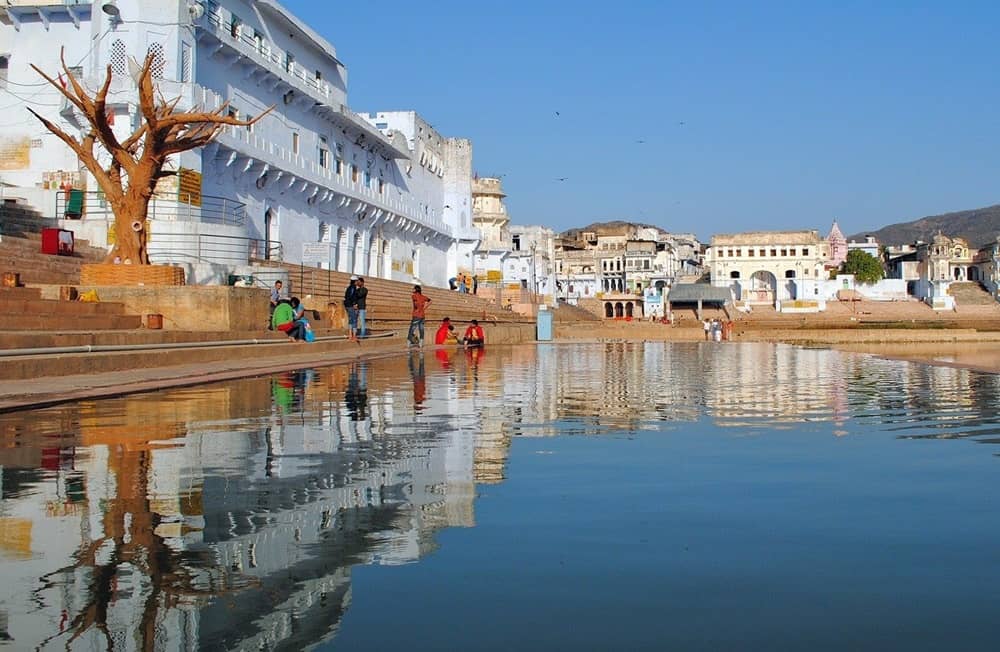
Pushkar: The Town of Fairs and Festivities
Pushkar is one of the oldest cities in India. Located to the northwest of Ajmer, this peaceful city attracts thousands of tourists and devotees who visit Rajasthan every year. Positioned at an altitude of 510 metres, Pushkar is surrounded by hills on three sides.
The Nag Pahar, which means Snake Mountain, acts as a natural border between Ajmer and Pushkar. Known as the “rose garden of Rajasthan”, Pushkar is famous for its roses, with the essence of the Pushkar rose being exported all over the world. The city’s rich mythological history and timeless architectural heritage make it a fascinating place to visit.
According to legend, Lord Brahma, believed to be the creator of the Universe, dropped a lotus onto the ground, which caused a lake to appear. He decided to name the place after the flower, and that’s how the name Pushkar came to be. The city is also home to the only temple dedicated to Lord Brahma in the entire world. For Hindus, visiting Pushkar is considered the ultimate pilgrimage, a journey believed to lead to salvation.
Places to visit in Pushkar
Pushkar Lake
-
- According to Hindu scriptures, the sacred Pushkar Lake is called ‘Tirtha Raj’, meaning the king of all pilgrimage sites. No pilgrimage is considered complete without a dip in the holy Pushkar Lake. The lake is semi-circular in shape, about 8-10 meters deep, and is surrounded by 52 bathing ghats and over 400 temples, making it a truly magnificent sight to behold.
Brahma Temple
- Nestled in the picturesque Pushkar valley, beyond Nangaparvat and Anasagar Lake, the Brahma Temple holds a special place in the hearts of Indians.
- It is the only temple dedicated to Lord Brahma in the world. Built with marble and decorated with silver coins, the temple is easy to identify by its red spire and the image of a swan (which is considered sacred to Lord Brahma).
- The chaturmukhi (four-faced) idol of Lord Brahma is housed in the inner sanctum, while a marble statue of the sun god stands guard outside. Interestingly, while all other gods are shown barefoot, Surya (the sun god) is depicted wearing ancient warrior’s boots.
Gurudwara Singh Sabha
- Located in the eastern part of Pushkar, the Gurudwara Singh Sabha was built in the early 19th century to commemorate the visits of the first and tenth Sikh gurus—Guru Nanak Dev and Guru Govind Singhji.
Varaha Temple
- The Varaha Temple is the largest and most ancient temple in Pushkar. Built by King Anaji Chauhan in the 12th century, this temple is dedicated to the third incarnation of Lord Vishnu, as a wild boar.
- According to legend, Varaha rescued the Earth from the depths of primeval waters, where it had been dragged by the demon Hirnayaksh. It is one of the most visited temples in Pushkar.
Savitri Temple
- The Savitri Temple is dedicated to Lord Brahma’s first wife, Goddess Savitri. Located on a hillock behind the Brahma temple, the long climb to this temple offers a panoramic view of the lake, surrounding temples, and sand dunes. Legend has it that the only Brahma Temple in Pushkar exists because of Savitri’s curse on Brahma for marrying another goddess, Gayatri, while beginning his yagna in Pushkar.
Rangji Temple
- The Rangji Temple is another popular shrine in Pushkar, dedicated to Lord Rangji, considered an incarnation of Lord Vishnu. The temple showcases a mix of South Indian, Rajput, and Mughal architectural styles. The prominent ‘Gopuram’ (a South Indian style tower) is a unique feature that attracts many visitors.
Pap Mochini Temple
- Presided over by the deity Ekadashi Mata, the Pap Mochini Temple is believed to provide followers relief from their cardinal sins. Located in the northern section of Pushkar, it is a spiritual landmark with splendid architecture. The temple is one of the most popular in Rajasthan and is known for its spiritual significance.
Sri Panchkund Shiva Temple
- The Sri Panchkund Shiva Temple is believed to have been built by the five Pandavas. Located about 2-3 kilometers from Pushkar Lake, on the eastern edge of the town, this temple is a quiet retreat for devotees.
Man Mahal
- The Man Mahal is one of the most majestic palaces of Pushkar. Originally built as a guest house for Raja Man Singh I, it is now a heritage hotel called RTDC Hotel Sarovar. Visitors can enjoy the stunning Rajasthani architecture of the palace and enjoy breathtaking views of the lakes and temples around Pushkar.
Atmateshwar Temple
- This beautiful 12th-century temple is dedicated to Lord Shiva and features an underground structure. The intricate Hemadpanti architectural style carvings give it a magnificent appearance. During Shivaratri, the temple attracts thousands of devotees who come to pay their respects to Lord Shiva.
Cities to visit in Rajasthan Cities to visit in Rajasthan Cities to visit in Rajasthan Cities to visit in Rajasthan Cities to visit in Rajasthan Cities to visit in Rajasthan Cities to visit in Rajasthan Cities to visit in Rajasthan Cities to visit in Rajasthan Cities to visit in Rajasthan Cities to visit in Rajasthan Cities to visit in Rajasthan Cities to visit in Rajasthan Cities to visit in Rajasthan Cities to visit in Rajasthan Cities to visit in Rajasthan Cities to visit in Rajasthan Cities to visit in Rajasthan Cities to visit in Rajasthan Cities to visit in Rajasthan Cities to visit in Rajasthan Cities to visit in Rajasthan Cities to visit in Rajasthan Cities to visit in Rajasthan Cities to visit in Rajasthan Cities to visit in Rajasthan Cities to visit in Rajasthan Cities to visit in Rajasthan Cities to visit in Rajasthan Cities to visit in Rajasthan Cities to visit in Rajasthan Cities to visit in Rajasthan Cities to visit in Rajasthan Cities to visit in Rajasthan Cities to visit in Rajasthan Cities to visit in Cities to visit in Rajasthan Rajasthan Cities to visit in Rajasthan Cities to visit in Rajasthan Cities to visit in Rajasthan Cities to visit in Rajasthan Cities to visit in Rajasthan Cities to visit in Rajasthan Cities to visit in Rajasthan Cities to visit in Rajasthan Cities to visit in Rajasthan Cities to visit in Rajasthan Cities to visit in Rajasthan Cities to visit in Rajasthan Cities to visit in Rajasthan Cities to visit in Rajasthan Cities to visit in Rajasthan Cities to visit in Rajasthan Cities to visit in Rajasthan
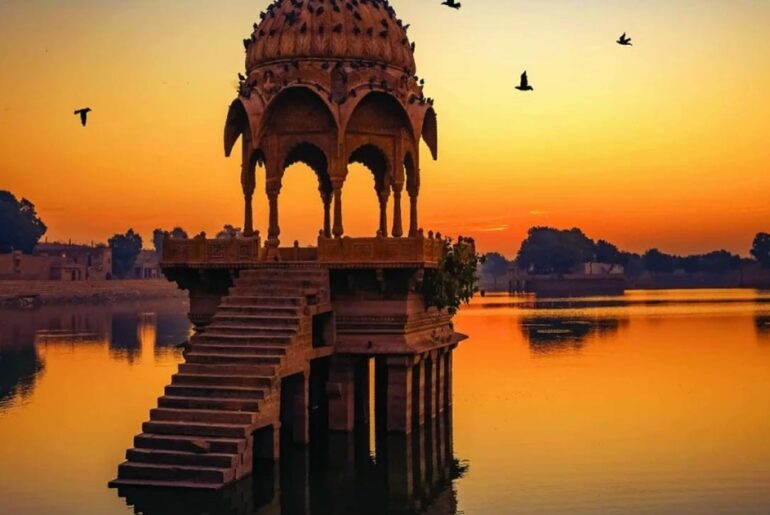

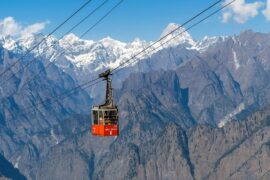
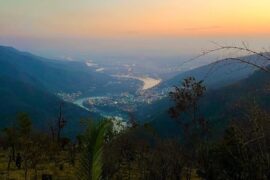
Comments are closed.